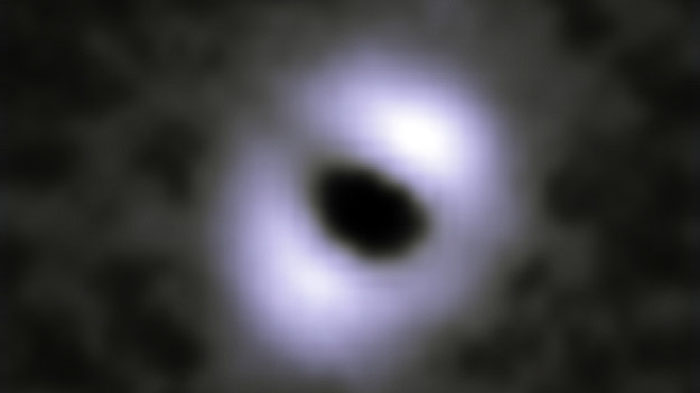.

ESA’s Herschel space observatory has provided the first images of a dust belt – produced by colliding comets or asteroids – orbiting a subgiant star known to host a planetary system.
After billions of years steadily burning hydrogen in their cores, stars like our Sun exhaust this central fuel reserve and start burning it in shells around the core. They swell to become subgiant stars, before later becoming red giants.
At least during the subgiant phase, planets, asteroids and comet belts around these ‘retired’ stars are expected to survive, but observations are needed to measure their properties. One approach is to search for discs of dust around the stars, generated by collisions between populations of asteroids or comets.
Thanks to the sensitive far-infrared detection capabilities of the Herschel space observatory, astronomers have been able to resolve bright emission around Kappa Coronae Borealis (κ CrB, or Kappa Cor Bor), indicating the presence of a dusty debris disc.
The star is a little heavier than our own Sun at 1.5 solar masses, is around 2.5 billion years old and lies at a distance of roughly 100 light years.
From ground-based observations, it is known to host one giant planet roughly twice the mass of Jupiter orbiting at a distance equivalent to the Asteroid Belt in our own Solar System. A second planet is suspected, but its mass is not well constrained.
Herschel’s detection provides rare insight into the life of planetary systems orbiting subgiant stars, and enables a detailed study of the architecture of its planet and disc system.
“This is the first ‘retired’ star that we have found with a debris disc and one or more planets,” says Amy Bonsor of the Institute de Planétologie et d’Astrophysique de Grenoble, and lead author of the study.
“The disc has survived the star’s entire lifetime without being destroyed. That’s very different to our own Solar System, where most of the debris was cleared away in a phase called the Late Heavy Bombardment era, around 600 million years after the Sun formed.”
Dr Bonsor’s team used models to propose three possible configurations for the disc and planets that fit Herschel’s observations of Kappa Cor Bor.
The first model has just one continuous dust belt extending from 20 AU to 220 AU (where 1 AU, or Astronomical Unit, is the distance between Earth and Sun).
By comparison, the icy debris disc in our Solar System – known as the Kuiper Belt – spans a narrower range of distances, 30–50 AU from the Sun.
In this model, one of the planets orbits at a distance of greater than 7 AU from the star, and its gravitational influence may sculpt the inner edge of the disc.
Quelle: ESA
5658 Views
